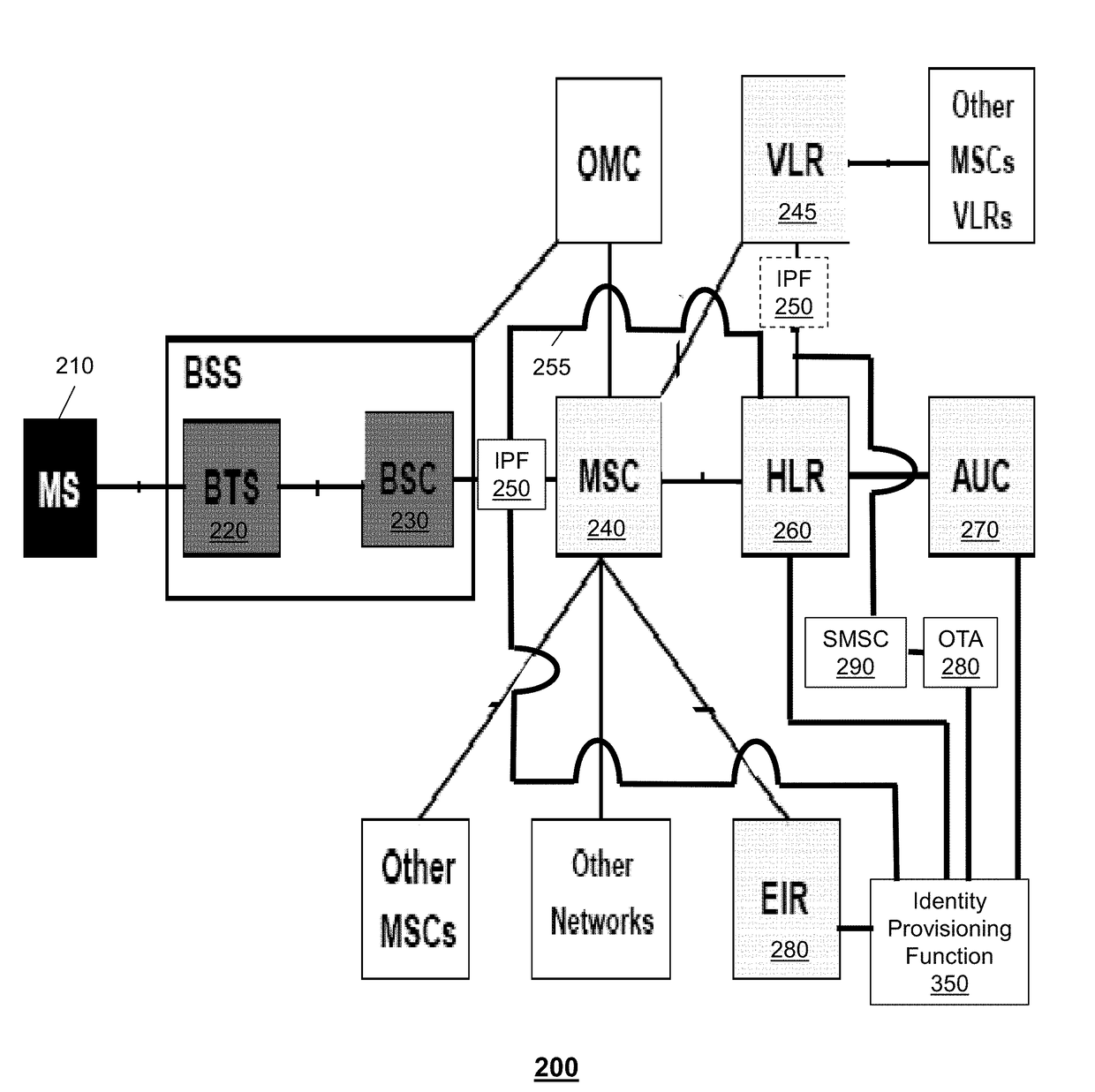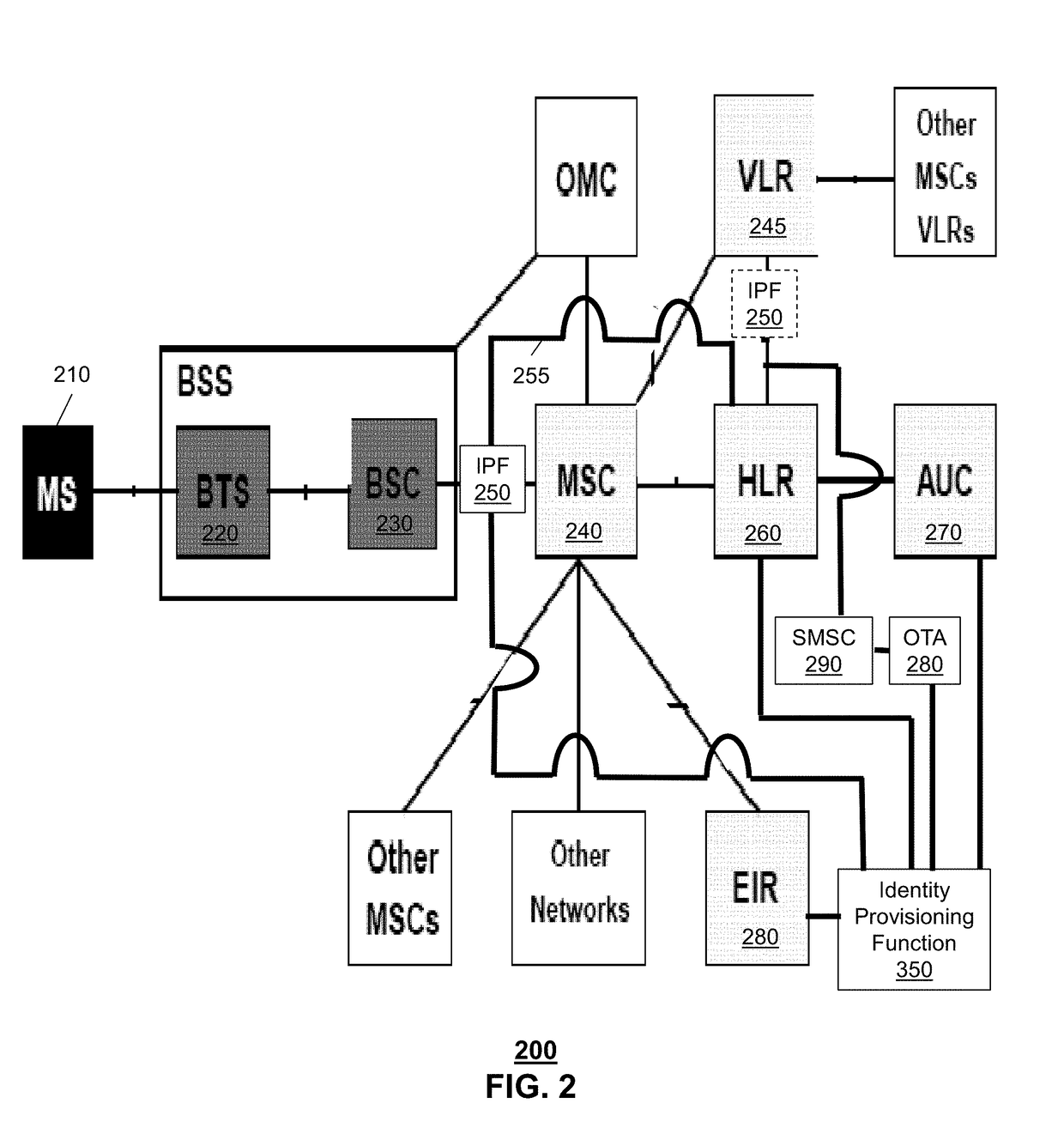For instance, the UICC of the
original device can be forced to use a default or bootstrap IMSI which has limited functionality such as being limited to bootstrap functions (e.g., functions that enable communicating with the network for administrative reasons including obtaining a reassigned IMSI), a pay for
service mode, and so forth.
For instance, the
error message can result from a registration request that is generated by or caused to be generated by the communication device utilizing an IMSI that is part of the listing of designated IMSIs.
For instance, the IMSI can be part of a registration request that is generated by or caused to be generated by the communication device 1310 or can be associated with an
authentication failure caused by use of the particular IMSI (e.g., the IMSI has been reassigned and the IMSI / original secret key combination is no longer valid and thus cannot be authenticated).
In another embodiment, if the registration request and the IMSI are from another device that has not been authorized to utilize the IMSI (and which is not the
original device associated with that IMSI) then an
authentication failure can be generated.
For instance, a
smart appliance may be moved within a premises or otherwise become unregistered with the network and may be seeking re-registration.
For instance, a utility meter may become unregistered with the network and may be seeking re-registration.
In another embodiment, reassignment of IMSIs for devices that have re-located can be limited, such as allowing only a particular number of reassignments or reassigning an IMSI that provides for limited services.
For example, if the identity provisioning function assigns an IMSI to a first
mobile phone where the IMSI is reused from an inactive second
mobile phone (e.g., inactive due to unpaid bills for a period of time exceeding a threshold of time), then the likelihood that the inactive
mobile phone would be active again resulting in a registration error may be low.
However, if the second mobile phone is reactivated (e.g., the user has paid bills in full), and second mobile phone attempts to register its IMSI with the registration function, an IMSI collision can occur.
That is, if the electric meter is in Denver and the first mobile phone is in Chicago, the likelihood of generating a registration error is low because there is a low chance that the
mobile device in Chicago can overlap into the
geographic area of the electric meter in Denver, thereby having a low likelihood in creating a registration error.
That is, for example, if each device has a transportable or fixed mobility type and each device is in a different location, then the identity provisioning function can assign the IMSI of the old device to the
new device such that there may be a low likelihood of a registration error / failure (e.g., an IMSI collision).
That is, it is a low likelihood that the
new device 3005 would move to the same location as the old device 2930 to cause a registration error (e.g. IMSI collision).
If the old device is transported to the same registration service area as the new device and attempts to register with the same registration function as the new device, a registration error would occur.
In addition, if one device moves into the same registration service area of the other device and registers its IMSI with a registration function, a registration error can occur.
If such a request is received by a registration function, a registration error (e.g. IMSI collision) would occur.
However, the registration function is not provisioned with the bootstrap IMSI for the device (i.e. the IMSI is not active yet so that it can be registered).
Further, the device is one that is activated for only limited time periods.
However, in response to requesting services for a limited period of time, the device can be provisioned with another, active IMSI during the limited period of time.
Further, the communication device may pay for service for a limited time period.
Such a registration may occur if the third registration request was sent to the registration function because the active IMSI would not be in the registration function's registry and the registration function would not be able to process the registration request and thereby generate a registration error.
In some embodiments, the second OTA message can be lost or corrupted due to
network conditions.
 Login to View More
Login to View More  Login to View More
Login to View More 


